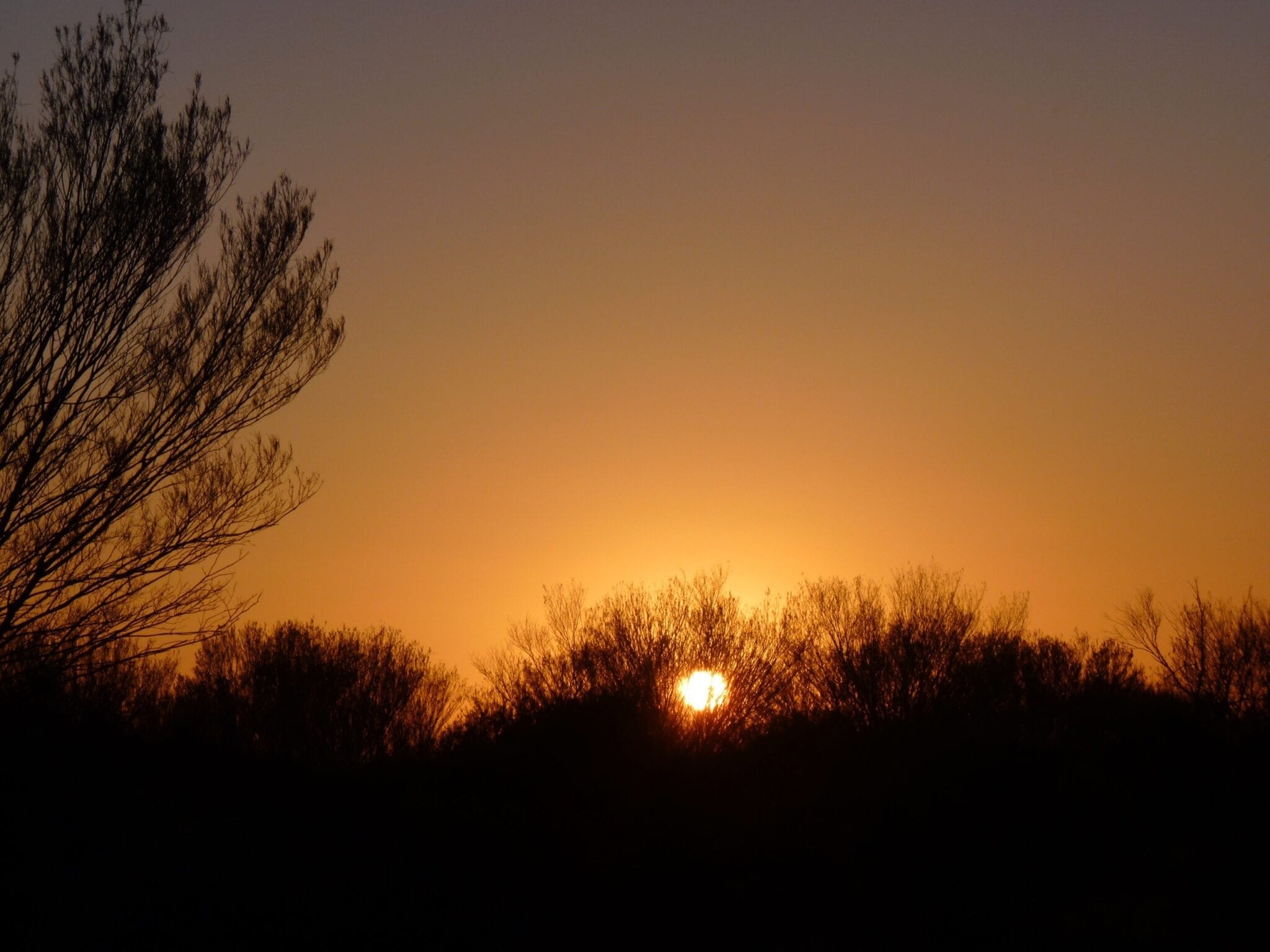Note: This article contains an affiliate link to Snowys. If you click through and make a purchase, we earn a small commission at no extra cost to you.
The Australian Outback is a beautiful place. It can also be dangerous if you’re not fully prepared. It’s remote, isolated and full of hazards.
A simple breakdown can leave you stranded in a life-threatening situation. People still die in Australia’s outback. Invariably they haven’t been properly prepared for the extreme heat and isolation.
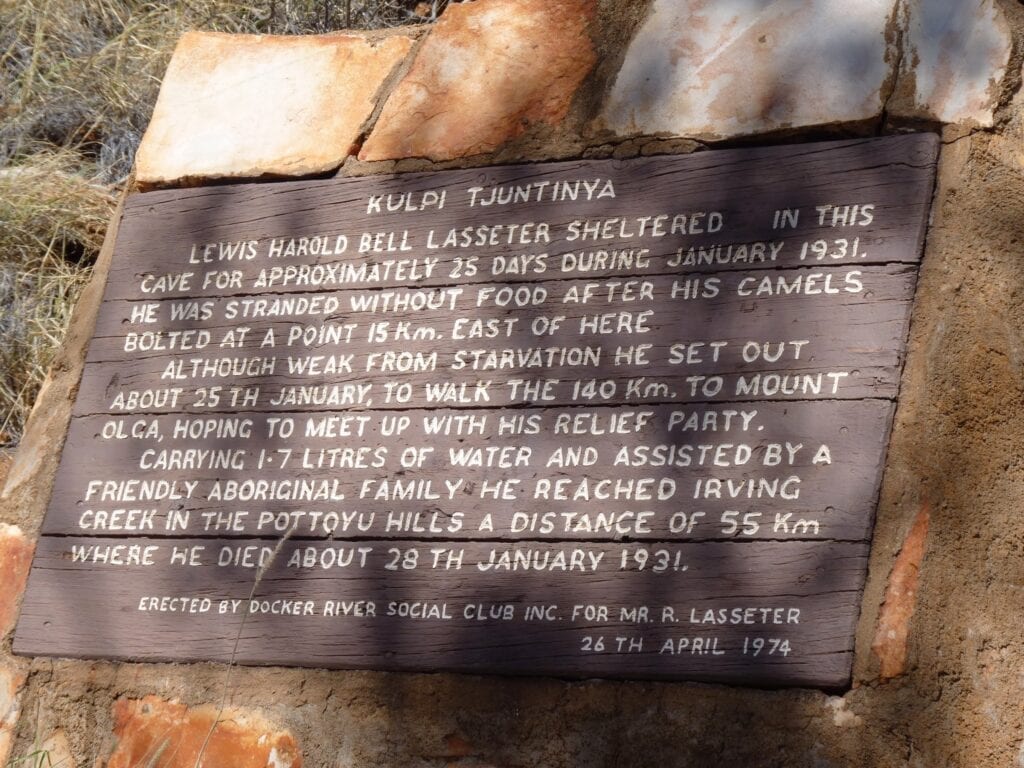
Don’t let this put you off though. You simply have to be prepared.
This ancient landscape is filled with the most incredible scenery imaginable. Once you get out there, you’ll be back time and again to experience the wonders of the outback. With the right preparation, you’ll be okay.
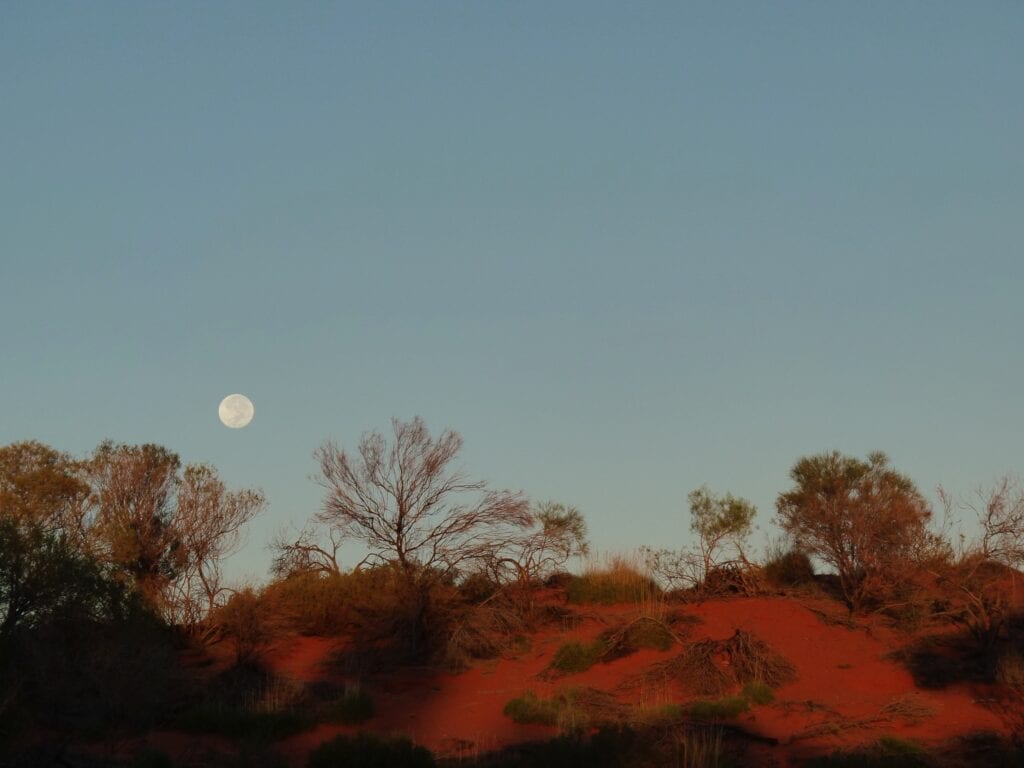
We’ll lead you through the six things you need to consider when planning your trip.
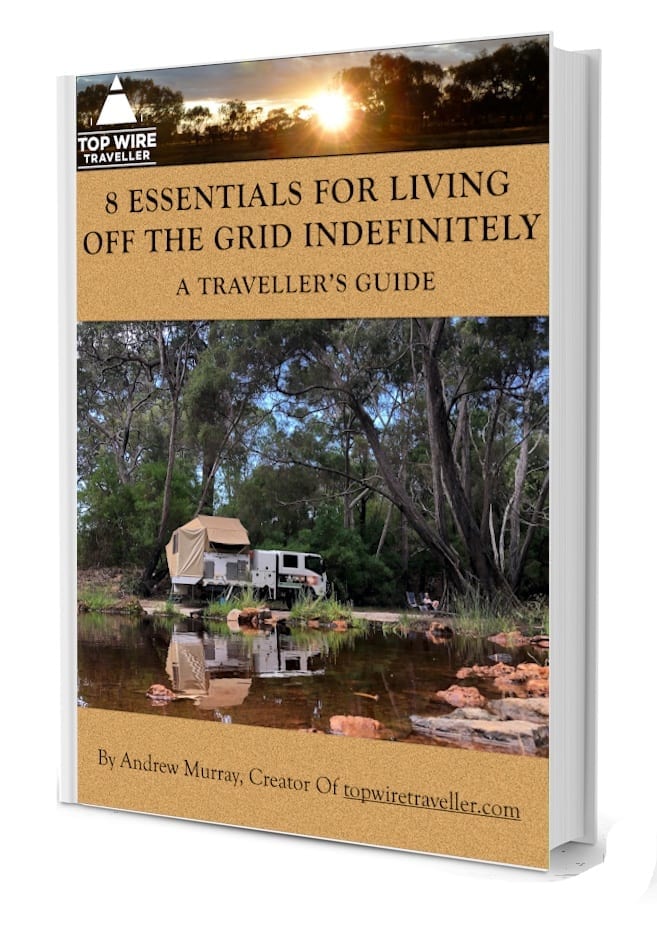
Free Download:
The 8 Essentials You Need To Live Off-Grid
…and don’t worry, eating raw fish isn’t one of them!
What You Need to Consider
The Australian Outback is unbelievably hot in summer. Temperatures of 45 – 50 deg C (113 – 122 deg F) are common, with corresponding ground temperatures above 75 deg C (167 deg F)!
Dehydration is your biggest enemy, it can kill very quickly.
So how can you maximise your chances of an event-free outback trip?
(Click infographic to enlarge).
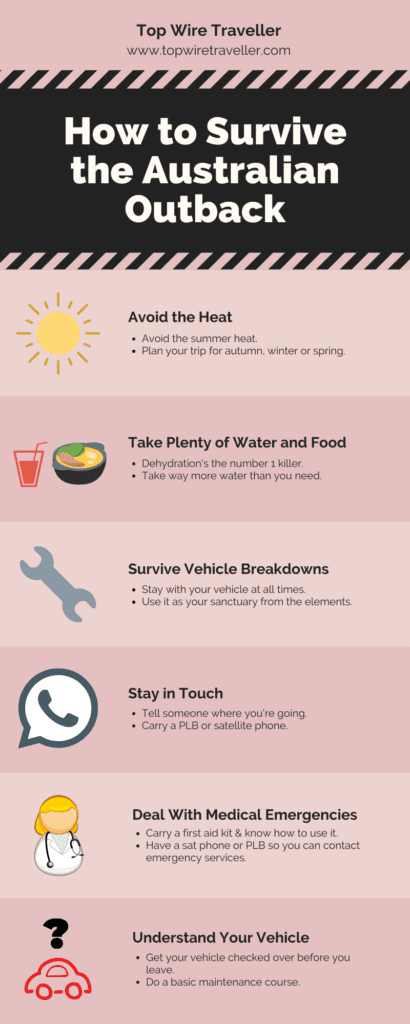
Share this Infographic On Your Site
Let’s look at each in more detail.
1. Avoid the Heat
The most obvious way is to minimise your exposure to the heat. Instead of planning your trip for summer, go in winter instead. Anytime from October to April can be extremely hot, so plan your trip to fall between May and September.
If this isn’t possible and you have to be in the outback during summer, avoid the hottest parts of the day.
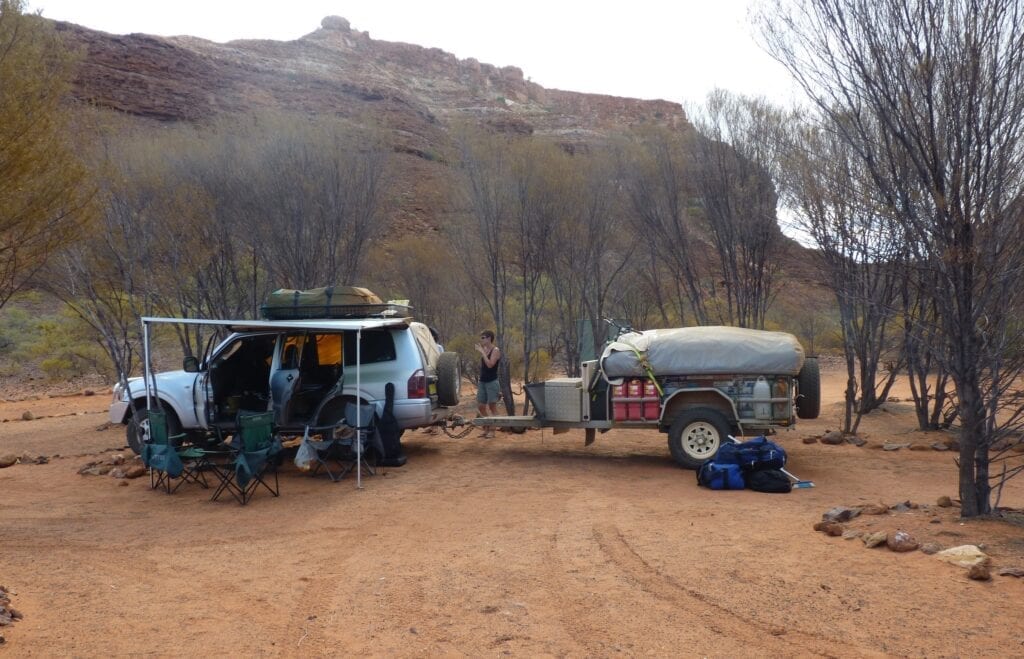
Take your cue from the wildlife. They’re out and about at night and early morning, then they shelter in a shady spot until late afternoon. You should too.
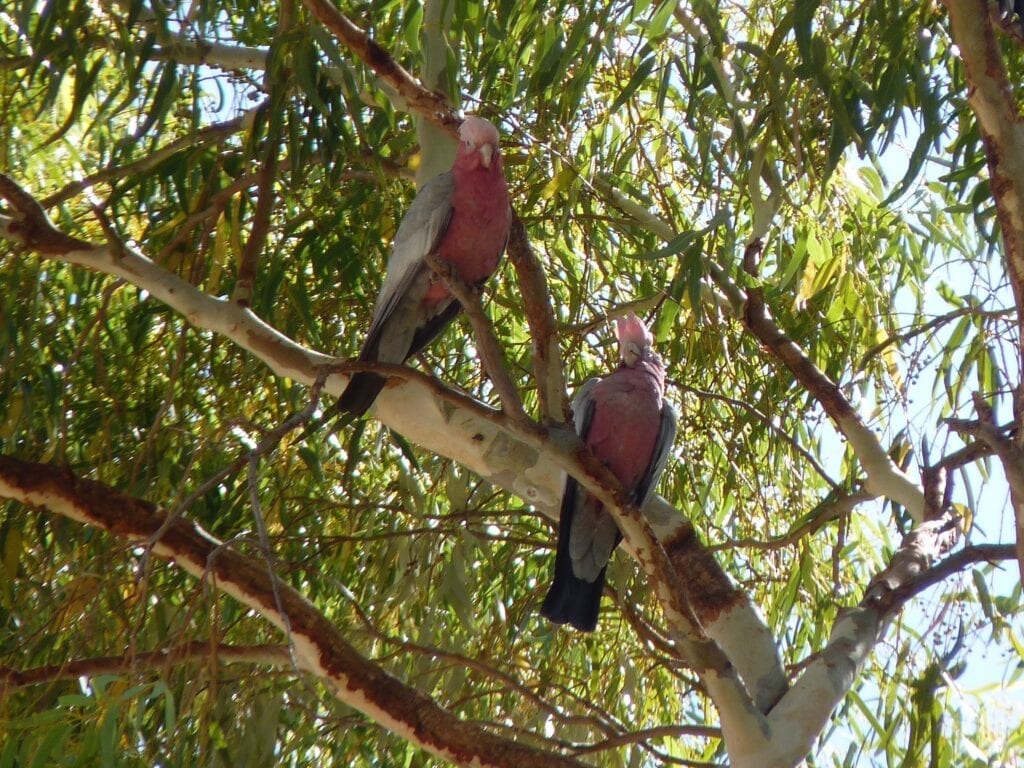
Even a seemingly harmless walk can have tragic consequences in the heat of the day.
2. Take Plenty of Water and Food
Water, water and more water. That’s what you need when preparing for survival in the Australian Outback. I cannot over-emphasise the importance of having more than enough water.
Water is way more important than food. You can die of dehydration within hours, but can potentially survive for weeks without food. Yes you’ll be ridiculously hungry, but you’re unlikely to die of starvation.
Lack of water is the number one killer.
We’ll go into more detail another time… how much water you need, where to find it in the desert and so on.
3. Survive Vehicle Breakdowns
If your vehicle breaks down or bogged, stay with your vehicle. This is critical. Your vehicle is a sanctuary:
- It stands out way more than a person, so is much easier for rescue crews to see from the air or even the from the ground.
- Your vehicle will have water and food (hopefully). So it’s your source of sustenance.
- You can use your vehicle as a shelter from the sun, even if it’s just a narrow slither of shade provided by the vehicle’s body.
- You have protection from the elements at night inside the cab.
- If rescue crews keep flying over and not seeing you, you can burn a part of the car (like a seat cover or mud flap) to produce a dark black smoke that’s more easily visible.
4. Stay In Touch
Always tell a reliable friend or family member where you’re going and agree on a date when you’ll contact them once your trip’s complete.
Give them clear instructions on what to do if you don’t make contact, eg “If we haven’t called you by Friday, call the Police at Marble Bar on this number and tell them we are travelling from Alice Springs to Marble Bar on the Gary Junction Road”.
Always carry at minimum a Personal Locator Beacon (PLB). We have a SPOT Gen 3 GPS Messenger, which we carry at all times when in the outback… even when we go on walks.
This device allows you to send an SOS or three other non-urgent messages to nominated emails or SMS. We have them set up as:
- We’re okay. This is in case we’ve decided to stay remote for longer than planned.
- Need mechanical help, not urgent.
- Need medical help, not urgent.
A satellite phone is another cheap insurance policy. This allows you to call anyone via the satellite network.
We’ll talk more about the pros and cons of PLBs vs satellite phones in another article.
5. Deal With Medical Emergencies
Snake bite, broken leg, heart attack, car accident… these are even more serious when you’re in the middle of the Australian Outback, a day or more from medical help.
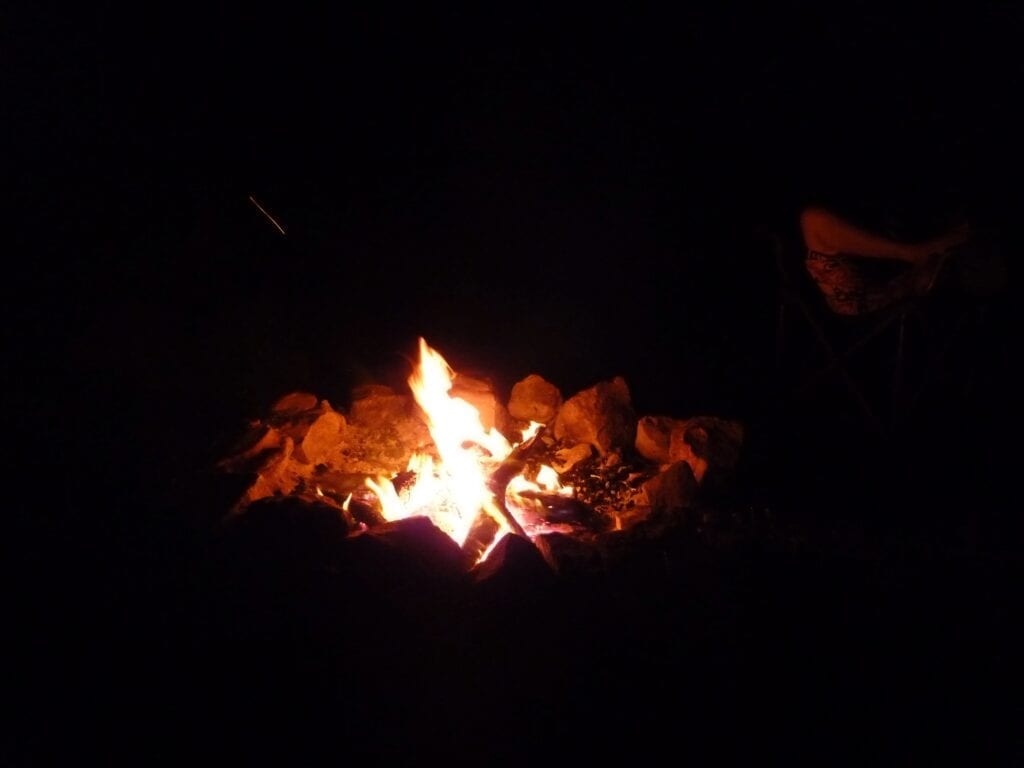
A basic first aid course and quality first aid kit are essential. Don’t just buy a first aid kit off the shelf, then throw it in your 4×4. Know what’s in it and know how to use it.
Carry a PLB or sat phone, so you can contact emergency services in a life-threatening situation.
6. Understand Your Vehicle
A minor mechanical issue like a flat battery can quickly escalate into a major situation when you’re in the middle of nowhere.
Take a course on basic maintenance. You don’t need to know much, just the basics of what to look out for. Learn what you should check every day before you break camp.
And before you leave home, take your vehicle to a competent 4×4 specialist. Get them to check over your vehicle to make sure it’s up to the rigours of outback travel.
Finally, learn how to drive on dirt roads. It’s totally different to driving on the blacktop. Understand the hazards and lift your right foot.
In Summary
To summarise:
- Avoid the heat by not travelling to the outback in summer or by avoiding the hottest part of the day.
- Take plenty of water and food. Dehydration is a killer.
- Survive vehicle breakdowns by staying with your vehicle. Never wander off.
- Stay in touch with friends or family and let them know your plans.
- Deal with medical emergencies by knowing basic first aid and carrying a first aid kit.
- Understand you vehicle by taking a basic maintenance course before you leave home.
The better prepared you are, the more you’ll enjoy our magnificent Australian Outback. A bit of preparation and commonsense goes a long way.
For more tips and ideas on Outback Safety and Survival, go here.

Get your Traveller’s Guides
… and a whole lot more at our FREE RESOURCES Page!
Any questions or comments? Go to the Comments below or join us on Pinterest, Facebook or YouTube.
Any errors or omissions are mine alone.

